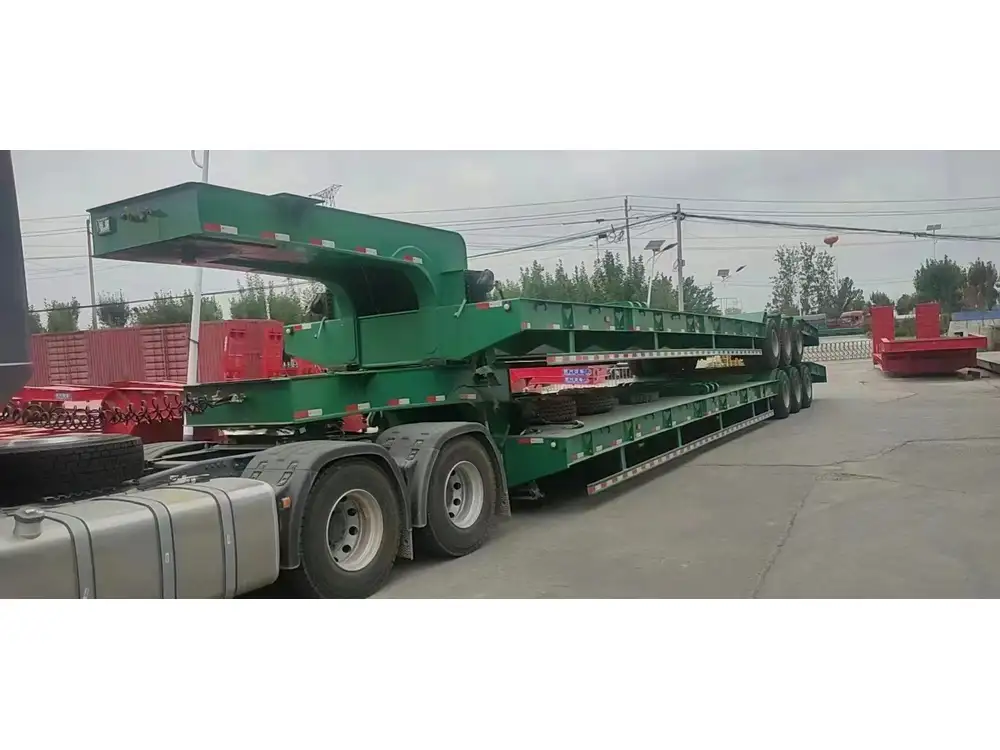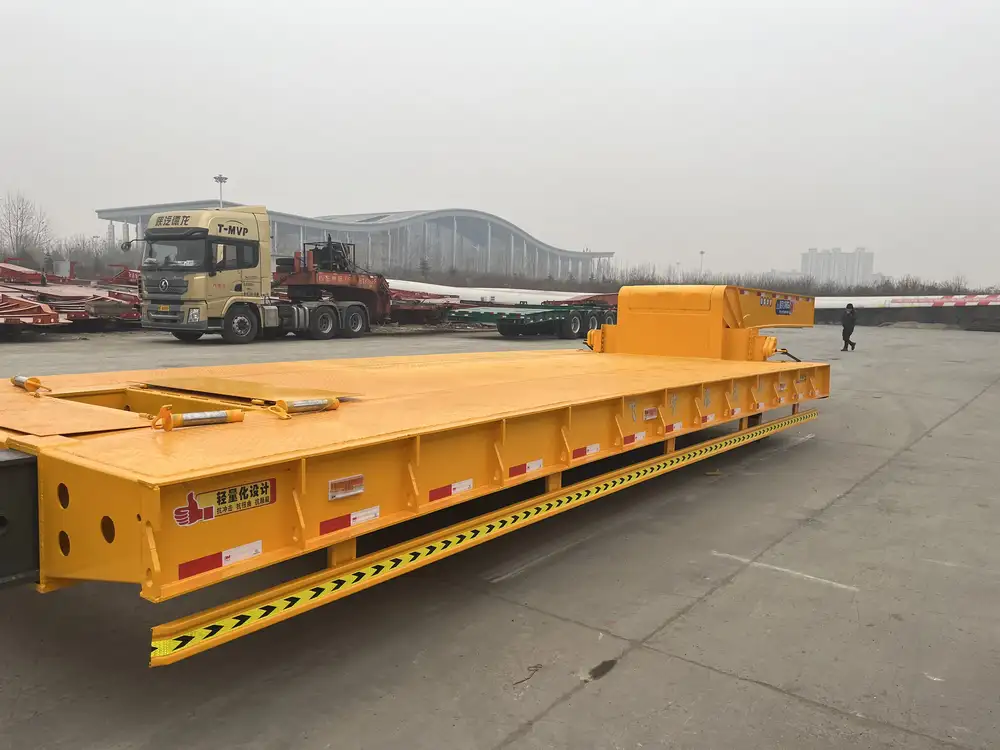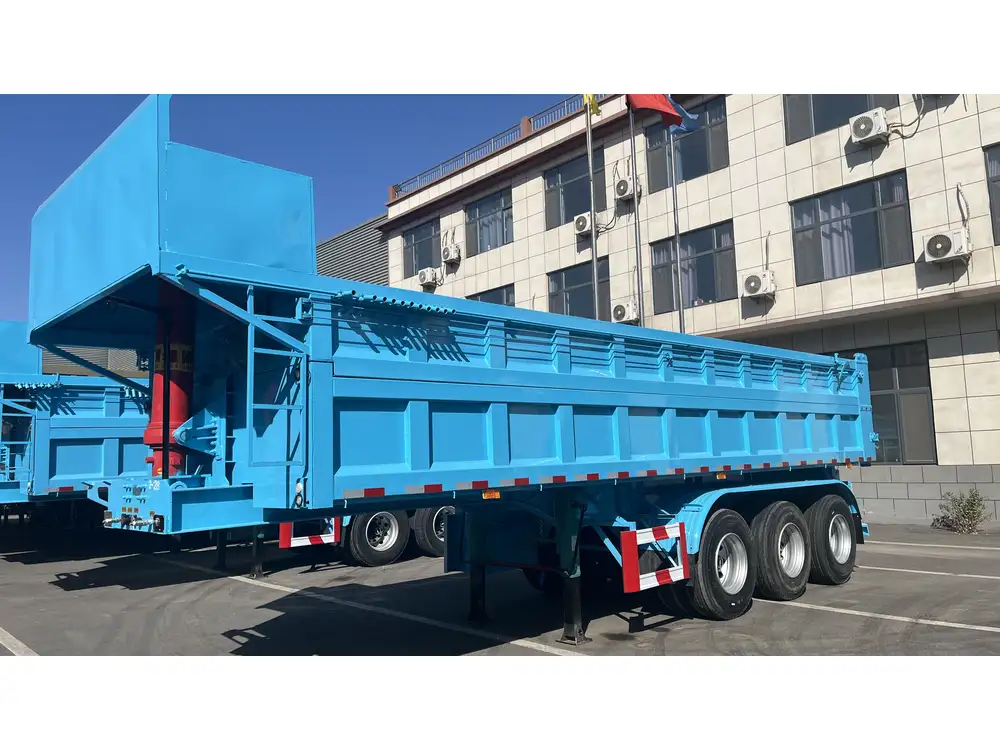In the world of transportation logistics, understanding weight limits and load specifications is paramount for the safe and efficient movement of goods. Flatbed trailers, with their versatility and numerous applications, often require an in-depth comprehension of load capacities, particularly when considering how much over the weight limit one can legally go. This guide endeavors to dissect the intricacies of flatbed trailer regulations, offering clarity and precision in navigating the complexities of load management.
Understanding Flatbed Trailer Dimensions and Capacities
Before delving into the specifics of overloading allowances, it is essential to understand the standard dimensions and capacities associated with flatbed trailers, which typically include:
| Dimension Type | Standard Measurement |
|---|---|
| Length | 48 to 53 feet |
| Width | 8.5 feet (102 inches) |
| Height | 4.5 feet (54 inches) |
| Weight Capacity | 48,000 to 55,000 lbs |
How Load Capacities Are Determined
The weight capacity of a flatbed trailer is dictated by several factors, including construction materials, axle configurations, and federal and state regulations. The maximum gross vehicle weight rating (GVWR) is essential, as it encapsulates the total weight a trailer, combined with its cargo, can safely carry.

Legal Limitations on Overloading
Federal Regulations
In the United States, the Federal Motor Carrier Safety Administration (FMCSA) regulates maximum weight limits for commercial trucks, which also pertain to flatbed trailers. Common weights outlined include:
- Single Axle Limit: 20,000 lbs
- Tandem Axle Limit: 34,000 lbs
- Gross Weight Limit: 80,000 lbs
Exceeding these limits can result in hefty fines, legal ramifications, and potentially dangerous driving conditions.
State-Specific Variations
Although federal regulations provide a framework, state laws may modify weight allowances. For instance, states can issue permits for oversize and overweight vehicles, allowing for greater load capacities under specific conditions. It is vital to consult local regulations before transporting oversized loads.

Exploring Overloading Allowances
While it is universally acknowledged that overloading is discouraged, certain exceptions exist, particularly for specialized cargo. Here, we outline how much excess weight one might transport legally.
Overweight Permits
Obtaining an overweight permit allows drivers to carry loads exceeding the conventional weight limit legally. Factors governing the issuance of such permits include:
- Type of Load: Certain commodities, such as construction equipment, may qualify for higher allowances.
- Route Restrictions: Designated routes can accommodate heavier loads, ensuring infrastructure safety.
- Duration of Permit: Temporary permits for specific trips may be granted, usually limited to a specific time frame.
Example Scenarios
| Scenario | Base Weight Limit | Overreload (with Permit) | Permit Duration |
|---|---|---|---|
| Construction Equipment | 80,000 lbs | Up to 100,000 lbs | Temporary (for the load) |
| Specialized Machinery | 80,000 lbs | Up to 120,000 lbs | Temporary (specific routes) |
| Agricultural Loads | 80,000 lbs | Up to 90,000 lbs | Seasonal |

Consequences of Overloading
Safety Risks: Overloading a flatbed trailer compromises braking efficiency, stability, and handling. This increases the likelihood of accidents.
Legal Penalties: Fines associated with weight violations can range dramatically, often costing thousands, depending on the extent of the overload.
Vehicle Damage: Exceeding recommended weight limits leads to accelerated wear and tear of the trailer and towing vehicle, including axle failures and suspension damage.
Factors Influencing Load Management
Weight Distribution
Proper weight distribution is crucial for safe transport. An unevenly distributed load can lead to:
- Trailer Swaying: Increased risk of tipping during turns or adverse weather conditions.
- Axle Misalignment: Excessive strain on certain axles, resulting in premature failure.

Best Practices for Weight Distribution:
- Centralized Load Placement: Ensure the majority of the load is centered over the trailer’s axles.
- Secure Load Strapping: Utilize chains, straps, and tarps to prevent load shifts while in transit.
Load Type Considerations
Different types of loads may necessitate distinct handling and transport approaches. Here are examples of common load types:
| Load Type | Recommended Tie-Downs | Specific Regulations |
|---|---|---|
| Construction Equipment | Chains/Straps | Must meet state-specific permits |
| Lumber/Building Materials | Tarps/Straps | Must comply with local standards |
| Machinery | Chains/Straps (specific) | May require special permits |
Navigating Seasonal and Route-Based Limitations

Seasonal Weight Restrictions
During certain times of the year, especially in spring thaw periods, many jurisdictions impose weight limitations to protect roadways from damage. Understanding these seasonal regulations is imperative for compliance.
Route Restrictions
Some routes impose specific weight standards, particularly in urban areas or on bridges. It is advisable to plan transport routes accordingly, ensuring adherence to area-specific load limitations.
Conclusion: Best Practices for Compliance and Safety
Navigating the world of flatbed trailer logistics can be a labyrinthine journey, especially regarding load limits and regulations. By appreciating the regulations from both federal and state perspectives, actively pursuing the necessary permits for weight excess, and implementing proper load management and distribution techniques, transportation professionals can optimize their operations while ensuring safety.

Key Takeaways:
- Adhere to federal and state weight limits.
- Secure necessary permits to legalize overload scenarios.
- Prioritize weight distribution for safe transport.
- Stay informed about seasonal and route-based regulations.
The balance between maximizing cargo capacity and ensuring compliance with legal stipulations is critical for successful flatbed transportation. By adopting these best practices, we can mitigate the risks associated with overloading and foster a culture of safety and efficiency in the transportation industry.



